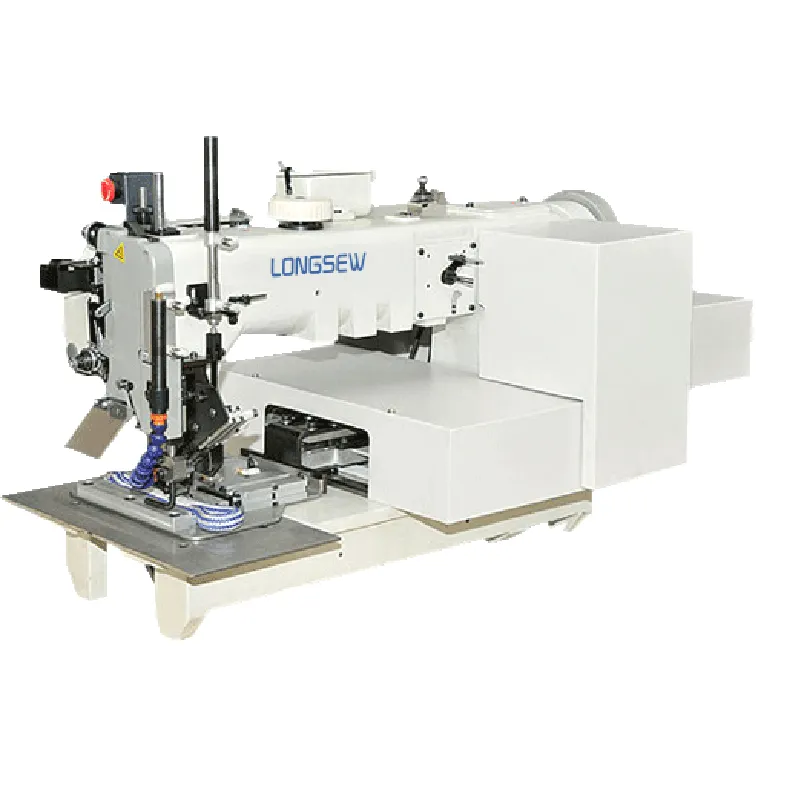High-Speed Lockstitch Sewing Machine Uses and Applications in the Textile Industry
High-Speed Lockstitch Sewing Machine Applications and Benefits
The high-speed lockstitch sewing machine represents a pivotal innovation in the textile industry, offering unmatched efficiency and precision for various sewing applications. This advanced sewing technology has transformed the way fabric is stitched together, catering to a wide range of sectors, including fashion, automotive, upholstery, and garment production. In this article, we will explore the numerous applications of high-speed lockstitch sewing machines and their significant advantages.
Applications
1. Fashion Industry The fashion industry relies heavily on high-speed lockstitch sewing machines for creating intricate designs and garments. These machines allow tailors and designers to achieve high-quality stitches quickly, which is crucial in fast-paced environments where time is a critical factor. With the capability to handle various fabric types—ranging from delicate silk to sturdy denim—these machines are indispensable in clothing manufacturing.
2. Garment Production Mass production of garments requires machines that can operate at high speeds without compromising on stitch quality. High-speed lockstitch machines are designed for continuous use, able to handle thousands of stitches per minute. This efficiency significantly reduces production time and labor costs, allowing manufacturers to meet the demands of the rapid fashion cycle.
3. Automotive Industry In the automotive sector, high-speed lockstitch sewing machines are essential for assembling and sewing interior components such as seat covers, headliners, and carpets. The durability of the lockstitch provides strong seams that can withstand wear and tear, ensuring longevity and reliability in automotive upholstery.
4. Upholstery and Home Textiles High-speed lockstitch machines are also pivotal in upholstery work and the crafting of home textiles like curtains, cushions, and bed linens. These machines can sew through multiple layers of fabric, providing robust and aesthetic seams that enhance the overall quality of the finished product.
5. Medical Textiles In the medical field, the need for high-precision and durable stitching is critical, especially in the manufacturing of textiles used in medical devices, uniforms, and bedding. High-speed lockstitch sewing machines meet stringent hygiene and quality standards, making them suitable for producing items that require cleanliness and durability.
hi speed lockstitch sewing machine application

Benefits
1. Speed and Efficiency The primary advantage of high-speed lockstitch machines lies in their remarkable speed. Capable of sewing up to 5,000 stitches per minute or more, these machines vastly reduce production times, making them ideal for businesses that need to maximize output within tight deadlines.
2. Consistency and Quality High-speed lockstitch sewing machines provide consistent stitch quality, essential for maintaining the integrity of products. The lockstitch design ensures that seams are tight and uniform, reducing the likelihood of defects that can occur with lower-quality stitching methods.
3. Versatility These machines can be adapted to sew various materials, from lightweight textiles to heavier fabrics. This versatility allows manufacturers to use them for multiple applications, making them a valuable investment for sewing operations.
4. Reduced Labor Costs The efficiency of high-speed sewing machines means that fewer operators are needed to complete the same amount of work compared to manual sewing. This no only enhances productivity but also reduces labor costs associated with the sewing process.
5. User-Friendly Features Modern high-speed lockstitch sewing machines often come equipped with user-friendly features such as automatic thread trimming, programmable stitch patterns, and digital controls. These enhancements minimize the learning curve for operators and further streamline production processes.
Conclusion
The high-speed lockstitch sewing machine is an integral tool across various industries, fostering innovation and productivity in sewing operations. Its applications span from fashion to automotive, each benefiting from the speed, precision, and quality these machines offer. As technology continues to evolve, the role of high-speed lockstitch sewing machines will undoubtedly expand, adapting to meet the changing needs of the textile market and providing manufacturers with the capabilities to thrive in a competitive landscape. Investing in such advanced machinery not only enhances operational efficiency but also sets the stage for higher-quality products and satisfied customers.
-
Zigzag Sewing MachineNewsMay.12,2025
-
Single Needle Sewing MachineNewsMay.12,2025
-
Overlock Sewing Machine PriceNewsMay.12,2025
-
Heavy Duty Industrial Sewing MachineNewsMay.12,2025
-
FIBC Sewing MachineNewsMay.12,2025
-
Cylinder Bed Sewing MachineNewsMay.12,2025
-
Revolutionizing Sewing with CNC TechnologyNewsMar.28,2025





























